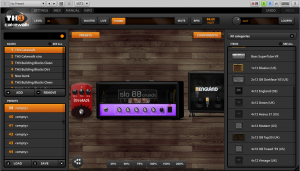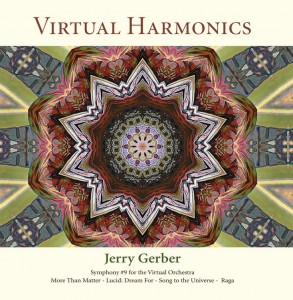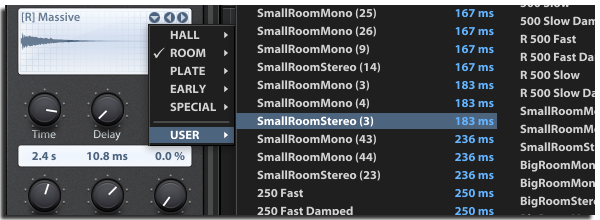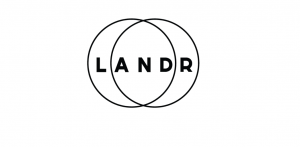by Daniel Gonz
We’d like to release an impulse pack that we created last year in New York City. This free impulse response pack captures the simple ambience of two fantastic live rooms for drums, vocals, and pretty much any acoustic instrument you can imagine. Drop them into your choice of any convolution reverb to add depth to the elements of your mix.
The Dynamic Gate | A Cleaner Way To Mix Drums
by Daniel Gonz
Gates are wonderful processors that can clean up background noise and bleed in your audio tracks. They’re a bit tricky to understand because the key to successfully using one is often a specific feature that’s hidden or buried in the interface. The feature I’m referring to is called the sidechain. It’s a powerful element of my mixing workflow and I’d like to show you why.
To follow along with this post, you can download the audio examples here.
In its simplest form, a gate allows a signal to pass through it only when its decibel level is above a set threshold. This means the gate is ‘open’. If the signal falls below the threshold then no signal is allowed to pass. This means the gate is ‘closed’. The sidechain becomes an integral part of this entire process because it’s what the gate uses to detect whether or not the signal is above or below the set threshold.
Continue reading “The Dynamic Gate | A Cleaner Way To Mix Drums”
CakeTV Live Ep 4 – Mixing Drums in SONAR Part 1
HOW The Duke Western USES SONAR TO CREATE MUSIC FOR DUCK DYNASTY (AND MORE)
 Here at Cakewalk we are fortunate to have an external team of rocket scientists who help test out SONAR beta releases. This team is dedicated, passionate and most of all appreciated by all of us internally here at the Cake shop. Recently I received a general email from one of my esteemed colleagues mentioning that one of our trustworthy beta soldiers was jumping off the beta-battlefield in lieu of another SONAR related activity. Huh? This peaked my curiosity and I felt obliged to dig a bit deeper on the subject. What could “another SONAR related activity” involve? SONAR Olympics? SONAR CPU Racing? SONAR Academy?
Here at Cakewalk we are fortunate to have an external team of rocket scientists who help test out SONAR beta releases. This team is dedicated, passionate and most of all appreciated by all of us internally here at the Cake shop. Recently I received a general email from one of my esteemed colleagues mentioning that one of our trustworthy beta soldiers was jumping off the beta-battlefield in lieu of another SONAR related activity. Huh? This peaked my curiosity and I felt obliged to dig a bit deeper on the subject. What could “another SONAR related activity” involve? SONAR Olympics? SONAR CPU Racing? SONAR Academy?
Featured Music Placements on Discovery Channel, History Channel, CBS, Bravo Network
Continue reading “HOW The Duke Western USES SONAR TO CREATE MUSIC FOR DUCK DYNASTY (AND MORE)”
CakeTV Live Episode 5: TH3 Cakewalk Edition
How the new "TH3 Cakewalk" Will Elevate Your Recordings in SONAR

Whether you update SONAR every month or not, this month is a great time to hit the C3 button. Besides the new cutting edge LP mastering plug-ins, we have worked hard and closely with our good friends at Overloud to deliver something that can truly change your sound as a SONAR user. TH3 Cakewalk has arrived and will now replace TH2 moving forward, and I had the opportunity to run the beta for the last month building some basic presets for the plug-in. Right out of the gate I found this VST3 to be a nice upgrade from its predecessor TH2.
Now I am absolutely nothing close to a guitar wizard, but I have been hacking around since I picked up the instrument at age 5, so I’ve been around the block with guitar tones touring, producing, engineering, recording, etc. like a lot of folks probably reading this. From a production standpoint, I’ve always loved the convenience of amp simulators, but always hated what would happen to the tone when trying to mix them together with drums that had been recorded with 1073’s, API’s or other heavy duty pres and mics… the tone gets small pretty fast. In my opinion, this is something that Overloud in general has excelled at—DSP and algorithms that truly stay at the front of the mix no matter what the context. TH3 brings this concept to even another level. Here are some of my quick thoughts and findings.
Sounds
 There are a lot of changes with the new TH3 Cakewalk including the new and upgraded User Interface which I will get into, but I bet a lot of folks like me really base their judgments on how things sound. The good news is that once you are up and running with the plug-in you will notice a nice improvement on the sound quality from TH2 Producer/Cakewalk. 5 new amp models with more accurate model reproduction are included in TH3 Cakewalk, and all have improved DSP along with enhanced preamp and power amp stages. To my ear, I notice a more “open and natural” sound in general, but also notice a more responsive relationship between the pick and the strings in terms of “feel”—like when you play a guitar through an amp that just had the tubes replaced. I also notice more presence overall, but the right type of presence without harshness. The low-mids and mids are thick and punchy and I especially love the new Slo88 and Tweed Deluxe amps which have a lot of character. The Bassface is a beast as well; this amp is a secret weapon for many rock producers who use it to double rhythm guitar parts recorded with other amps. Blending these two sources together produces a tone that is about as thick as it gets.
There are a lot of changes with the new TH3 Cakewalk including the new and upgraded User Interface which I will get into, but I bet a lot of folks like me really base their judgments on how things sound. The good news is that once you are up and running with the plug-in you will notice a nice improvement on the sound quality from TH2 Producer/Cakewalk. 5 new amp models with more accurate model reproduction are included in TH3 Cakewalk, and all have improved DSP along with enhanced preamp and power amp stages. To my ear, I notice a more “open and natural” sound in general, but also notice a more responsive relationship between the pick and the strings in terms of “feel”—like when you play a guitar through an amp that just had the tubes replaced. I also notice more presence overall, but the right type of presence without harshness. The low-mids and mids are thick and punchy and I especially love the new Slo88 and Tweed Deluxe amps which have a lot of character. The Bassface is a beast as well; this amp is a secret weapon for many rock producers who use it to double rhythm guitar parts recorded with other amps. Blending these two sources together produces a tone that is about as thick as it gets.
New amps in TH3 Cakewalk:

Bassface 59: Model of a classic american “bass” combo amp, tuned to be great for rhythm and blues playing on guitar once overdriven
Continue reading “How the new "TH3 Cakewalk" Will Elevate Your Recordings in SONAR”
Cakewalk Talk Episode 3 Part 1 – Interview with Daniel Rowland from LANDR
Check out the latest episode of Cakewalk Talk, where Dan Gonzalez interviews audio engineer Daniel Rowland (Adrian Belew, StudioBelew, Accept) about LANDR and his role at the company.
We’ve posted a shorter cut below as well.
How To Create Easy Tempo Maps in SONAR with Melodyne 4
Thanks to Melodyne’s advanced tempo detection and SONAR’s powerful ARA drag-and-drop integration, your projects can now follow a live recording’s tempo. Simply drag a standard audio clip (or Melodyne region effect) to SONAR’s timeline, and SONAR creates a tempo map that follows the clip tempo. Watch the new video for more information.
Cakewalk Talk Episode 1: SONAR X3 vs SONAR Platinum – Adding Tracks
How Jerry Gerber Creates Incredible Compositions Without Ever Using the PRV
 The art of “making music” in this digital age… When you really think about it, how incredible is it that as music-creators we can take something from our minds, and sculpt it into something tangible? No matter how novice or professional you are, no matter what others think or say about the music YOU create, there’s no denying that we are living in an incredible time of opportunity for crafting music.
The art of “making music” in this digital age… When you really think about it, how incredible is it that as music-creators we can take something from our minds, and sculpt it into something tangible? No matter how novice or professional you are, no matter what others think or say about the music YOU create, there’s no denying that we are living in an incredible time of opportunity for crafting music.
A while back I was introduced to a gentleman and composer working in SONAR out of Northern California by the name of Jerry Gerber. I knew he was a great composer from his accomplished list of credentials, but what I wasn’t prepared for was being absolutely fascinated by the sonic depth of “his sound,” the detail and integrity of his tracks, and moreover—how he accomplishes all of the above mentioned. When you listen to his work, and then hear his theoretic viewpoint of how to correctly compose and produce music, you quickly realize that this guy has tapped into something a bit deeper than most musicians.
What really made an impression on me was that without ever using the Piano Roll View (PRV), Jerry Gerber has composed and produced for some very highly-profiled films, television shows, computer games, concerts, dance and interactive media, and also back in the day wrote all of the original music for the remake of the popular children’s television show, The Adventures of Gumby. His approach to all this is through an expert level of “MIDI Sequencing” which he explains in the newest edition of the SONAR Newburyport eZine.
 I was intrigued and beyond impressed by his words in the eZine, so I decided to [self-indulgently] dig a bit deeper by reaching out to Jerry to get some insight on his methods of madness with his new record. His words of musical wisdom make a lot of sense for anyone creating music in any genre, and I highly recommend the read; and then applying what you learn by analyzing and enjoying his new full-length composition.
I was intrigued and beyond impressed by his words in the eZine, so I decided to [self-indulgently] dig a bit deeper by reaching out to Jerry to get some insight on his methods of madness with his new record. His words of musical wisdom make a lot of sense for anyone creating music in any genre, and I highly recommend the read; and then applying what you learn by analyzing and enjoying his new full-length composition.
[Cakewalk]: You talked a lot about the “programming” aspect of the new record, but what was the “writing” process like for you? Continue reading “How Jerry Gerber Creates Incredible Compositions Without Ever Using the PRV”







